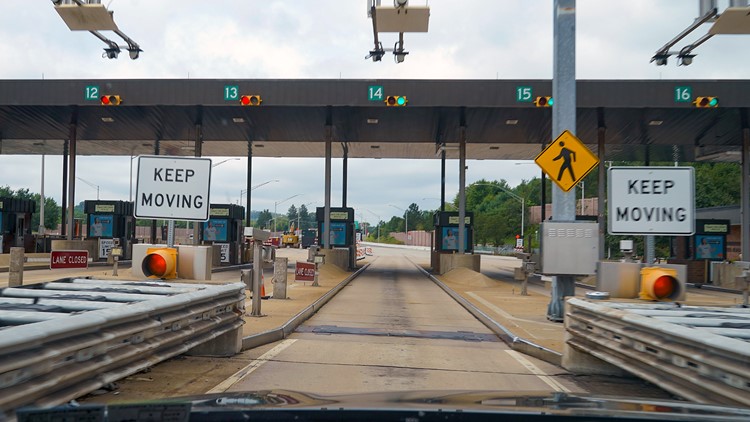PENNSYLVANIA, USA — The Pennsylvania Turnpike Commission (PTC) has begun building the final phase of its All-Electronic Tolling (AET) implementation.
Tolling points in eastern Pa. are currently being relocated from their current interchange locations, and will soon be replaced with highway-speed collection points that utilize Open Road Tolling (ORT).
ORT is a cashless, free-flowing mode of collecting tolls without the need for traditional toll plazas or booths.
Tolls will continue to be paid electronically with ORT, however, vehicles will now drive at highway speed under overhead structures, called gantries, which will serve to identify and classify vehicles, as well as process E-ZPass and Toll By Plate payments.
"Open Road Tolling is the culmination of the Pa. Turnpike's decade-long journey to modernize operations and meet customer expectations for seamless, nonstop travel," said PA Turnpike CEO Mark Compton. "ORT is a safer, more convenient way for customers to travel and represents the future of toll collection worldwide."
Pa. Turnpike officials cite additional reasons for ORT implementation as fulfilling customer expectations for seamless travel, being safer for drivers and employees, being better for the environment, allowing new access points to be added more easily and at a lower cost and helping to save the Pa. Turnpike more than $75 million annually.
19 gantries are currently being constructed, located east of the Reading Interchange (Exit 286) to the New Jersey line and along the entire Northeastern Extension (I-476).
The eastern ORT system will go live in 2025, with the central and western systems to be built beginning in 2025 and anticipated to go live in 2027.
On Sunday, April 30 Pa. State Police started to slow traffic in order for crews to begin installing toll gantries across the eastern Pa. Turnpike. This work will occur over the next several months, with traffic slowdowns on Sunday evenings during off-peak hours.
This transformation started more than 13 years ago when the Pa. Turnpike first embarked on its AET journey. AET was implemented in phases - first, four AET pilot projects were launched across the Commonwealth between 2016 and 2019. Soon after, the PTC converted the remaining parts of its 564-mile system to AET in 2020. Now, ORT signifies the final stage, delivering all the benefits that AET delivers.



